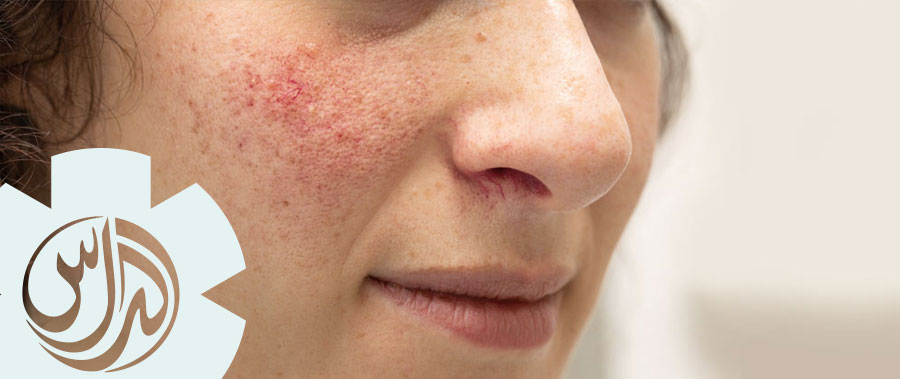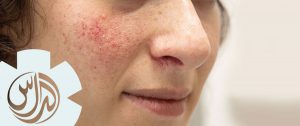Rosacea is a chronic skin disease which is characterized by redness and acne-like appearance on the cheeks, forehead, chin and nose. Besides that, affected regions of skin can be scalp, neck, back, chest and eyes. Visible, web-like vessels may also be present and this can worsen over time.
This skin condition mainly appears after the age of 30 and it may be very persistent. Rosacea cannot be cured, but with proper treatment unpleasant symptoms can be significantly reduced. Frequent blushing and flushing can be the first signs of rosacea and if you notice that your face often turns red for no apparent reason, maybe it’s time to visit your doctor. Our top-notch team of experts is at your disposal for consultations and diagnostics.

Due to visible skin problems, people with this disease can experience various psychological issues such as anxiety, depression, low self-esteem or avoiding social contacts.
What Causes Rosacea?
Causes for this troublesome skin disorder are unknown but there are numerous triggers that lead to flare-ups and some of them are cold wind, severe sunburn, heat, excessive exercise, extremely hot or cold weather, stress, spicy food, drinks rich in caffeine and alcohol.
There are, though, a few factors that are common to people affected with rosacea. One of the factors is genetics, as many people with rosacea have family members suffering from the same disorder, while another common trait is weakened immune system. Certain cosmetic treatments such as chemical peel can also trigger flare-ups. Rosacea patients should be very careful when it comes to cosmetics and prescribed or tailor-made skin products are preferable. People with fair skin are more prone to this condition and it more frequently affects women.
Four Main Subtypes of Rosacea
- Erythematotelangiectatic rosacea – constant redness and excessive blushing, accompanied by visible blood vessels on the surface of the skin;
- Papulopustular rosacea – permanent redness with bumps (pustules) filled with pus that are sometimes hard to tell apart from acne;
- Phymatous rosacea – skin thickening that usually affects nose and makes it look bulbous, but it can also affect other parts of the face;
- Ocular rosacea – red eyes and eyelids accompanied by inflammation, dryness, irritation, burning and stinging sensation as well as sensitivity to light.
How to Treat Rosacea in Dubai?
Establishing a proper diagnosis is of vital importance, because only in that case treatment can be successful. Each subtype of rosacea requires different kind of treatment. As we have already said, there is no cure for this disease, but its severity can be significantly reduced with proper treatment and prevention.
Measures of prevention include avoiding sunlight and applying sunscreen, types of food that trigger flare-ups, and stressful situations. Various medications are used for rosacea treatment and creams ivermectin and azelaic acid are considered successful, as well as orally administered medications such as brimonidine, doxycycline and isotretinoin. Some of these medications have antibacterial effects, while others are anti-inflammatory.
Alpha-hydroxy acid peels can help in reducing redness, papules and pustules, while antibiotics are prescribed in case of ocular rosacea. Lasers are successfully used for reducing symptoms especially redness and visible blood vessels. Certain lasers are also used for removal of the thickened skin caused by phymatous rosacea.
If you have any questions regarding this skin disease, or if you want our expert dermatologists to examine you and help you treat rosacea in Dubai, call us and make an appointment.
Book a visit 04 452 998 or by filling the online form
